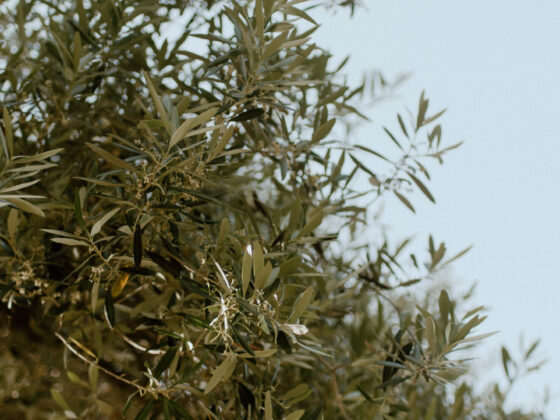We have often been told that dealing with doubt as a Christian is a dangerous thing; that asking questions can lead us away from Christ; or that seeking evidence is antithetical to mature faith.
While it is true that doubt can sometimes spiral us to places where we do not want to go, wrestling with doubt can lead us to deeper faith.
For example, the poet, Alfred Lord Tennyson struggled with doubt after the tragic loss of a friend in an accident.1
Reflecting on this journey in a poem entitled, “In Memoriam,” Tennyson wrote that
There lives more faith in honest doubt,
Believe me, than in half the creeds.2
We all struggle with doubt at some point in our Christian journey—feeling safe to explore our doubts can make or break our spiritual walk.
The beauty of doubt is that it leads to investigation, and investigation can lead us to find confidence in the God in whom we believe. When we orient our doubt towards Christ, he does not turn us away or make us feel ashamed. Instead, he takes us by the hand and leads us nearer to himself.
This is why I love the story of Thomas in the Bible. He struggled to believe Jesus had risen from the dead until he had a personal encounter with the resurrected Christ. Thomas’ story is complex and beautiful, and because of this, it warrants further investigation.
Thomas, Doubter and Faithful Disciple
In the Synoptic Gospels, Thomas is only mentioned by name in the list of the disciples. However, in John, Thomas appears in three separate passages.
When Jesus received word that Lazarus was sick and he would need to go back to Judea where he would likely be harassed by the Pharisees, Thomas said, “Let us also go, that we may die with him.” (John 11:16)
The other disciples questioned why Jesus would go back to Judea when his opponents just tried to stone him there. But, Thomas knew the risk and was eager to go to Judea with Jesus.
This suggests that Thomas was serious about being a disciple of Jesus. He was not afraid to suffer the same fate that Jesus did. Nor did he shrink back from following Jesus because things became difficult.
Next, when Jesus told his disciples about his impending death, he encouraged them by saying,
“And if I go and prepare a place for you, I will come back and take you to be with me that you also may be where I am. You know the way to the place where I am going.”
John 14:3–4
Thomas had questions.
He responded, “Lord, we don’t know where you are going, so how can we know the way?” (John 14:5b).
Committed to following Jesus, Thomas wanted to make sure that he knew the way to where Jesus was going.
Thomas asked questions during a time of deep uncertainty for all the disciples. But, he oriented his questions towards Jesus, as if somehow knowing that Jesus was the only one who truly had the answers.
Thomas and the Resurrection of Jesus
In the most well-known passage about Thomas, we are told that he was not with the rest of the disciples when Jesus came to them. After seeing Jesus, the disciples went to Thomas and exclaimed, “We have seen the Lord!”
The next words from Thomas are often interpreted as stubborn faithlessness:
“Unless I see the nail marks in his hands and put my finger where the nails were, and put my hand into his side, I will not believe.”
John 20:25b
For centuries, the Church has blamed Thomas for not believing without seeing while forgetting that the other disciples believed because they saw. They all encountered Jesus and saw for themselves that he truly had risen.
Jesus does not call us to blind faith. He does not expect us to believe without evidence.3 This is why we have the Gospels and the New Testament epistles. They are witnesses to the truth of Christ. We also have the Old Testament, which prophetically speaks forward about the life and work of Christ.
A week later, Jesus returned to the house where the disciples were gathered. Thomas was there this time.
Jesus did not chastise Thomas for not believing. Immediately after entering the house and greeting everyone there, Jesus went to Thomas and said,
“Put your finger here; see my hands. Reach out your hand and put it into my side. Stop doubting and believe.”
John 20:27
In response, Thomas proclaims, “My Lord and my God!” becoming the first person to explicitly acknowledge Jesus’ divinity.4
Stop Doubting and Believe
When Jesus approached Thomas, he did two things:
- He showed Thomas evidence of his resurrection.
- He told Thomas to stop doubting and believe.
The order here is pretty important.
Jesus showed Thomas evidence of who he was so that Thomas would believe. Upon seeing the evidence, Thomas fully believed that Jesus had resurrected from the grave and was not only his teacher but his Lord and God.
Similarly, Jesus does not expect us to believe on blind faith alone. In his kindness, he gives us evidence, satisfying our doubts and questions. It is up to us whether we will decide to believe or disbelieve.
In this Christian journey, we will have doubts. But doubt is not necessarily the same thing as disbelief. True believers doubt but we have the opportunity to give those doubts to Jesus.
Orienting our Questions Toward Jesus
We would not be able to quote the familiar John 14:6, if it was not for Thomas’ question in John 14:5.
Jesus does not turn away anyone who doubts. Instead, he bids them come. Jesus is gentle and merciful with those who doubt, revealing himself to them in a way that they can understand.
When we deal with doubts about our faith, we can orient them towards Jesus. We can bring him our questions, worries, and fears. We may not find all the answers we are searching for, but we find safety in the arms of Christ.
Conclusion
Tennyson goes on to write:
He fought his doubts and gather’d strength,
He would not make his judgment blind,
He faced the spectres of the mind
And laid them: thus he came at length
To find a stronger faith his own;
And Power was with him in the night
Which makes the darkness and the light,
And dwells not in the light alone
Dealing with doubt is hard, especially since it can be deeply personal.
In the second half of his poem, Tennyson depicts someone who fought and gained strength. He fought by using the evidence available to him and he faced the darkness that haunted his mind. Eventually, his faith grew stronger because of the Lord who was with him as he wrestled through the darkness in the night.
We deal with our doubt not through forcing them down but by turning to the Lord who loves us. He does not scorn our desires for evidence—through Scripture, the witness of those who came before us, our contemporary brothers and sisters, and the help of the Holy Spirit, he reveals the truth to us, leading us to proclaim like Thomas that he is indeed our Lord and God.
Footnotes:
1 https://www.britannica.com/biography/Alfred-Lord-Tennyson/Major-literary-work
2 https://www.poetryfoundation.org/poems/45349/in-memoriam-a-h-h-obiit-mdcccxxxiii-96
3 While we don’t have all the evidence we’d ever want, we do have good evidence for the resurrection of Christ.
4 https://www.britannica.com/topic/Gospel-According-to-John
Photo Credit: Emily Hughes
Shanté is the founder of Daily She Pursues, an online women’s ministry on a mission to help women pursue God’s heart through the study of the Word, cultivating prayer, and walking daily with the Lord. She is currently working on a Master’s Degree in Biblical Studies at Liberty University. Some of her favorite things include tea, journaling, art museums, essential oils, and thrift shopping.






